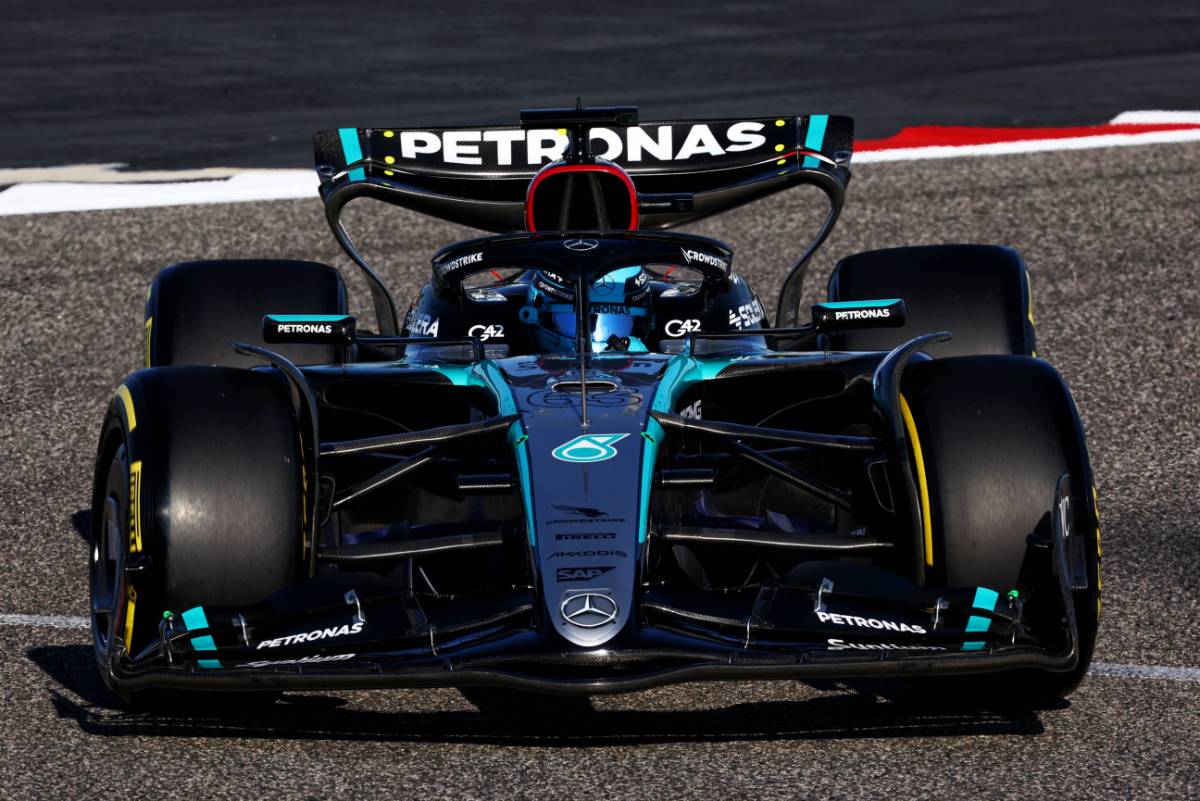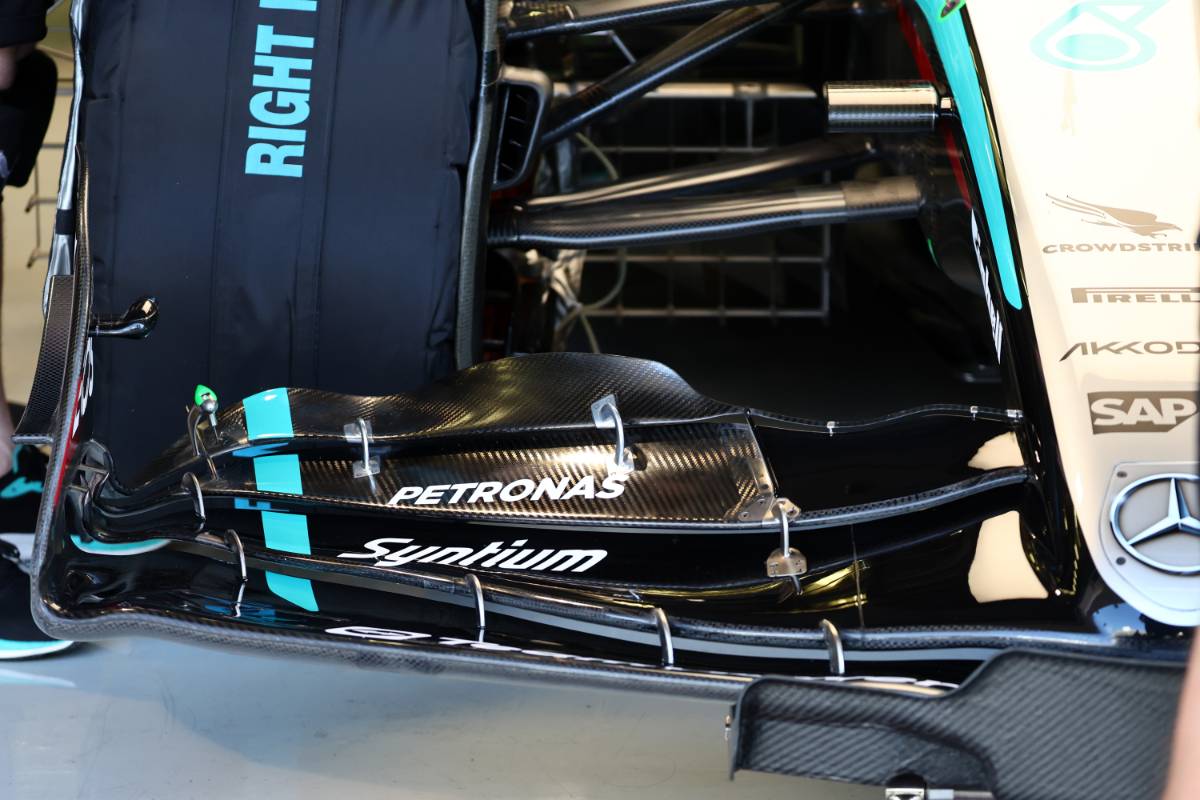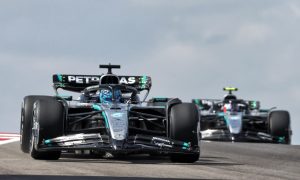
The unveiling of Mercedes' W15 F1 car has ignited a debate in the F1 paddock, with the car’s front wing design raising eyebrows for its potential exploitation of a technical loophole.
While deemed as entirely legal, the design's ingenuity pushes the boundaries of the regulations, sparking a discussion about the line between innovation and clever manipulation.
While the controversial element may be within the letter of the regulations, it has also been suggested that it is well beyond the spirit of the latter.
Mercedes’ design features an upper flap configuration that includes an extremely slender element – that resembles a wire – that runs along the rear edge of the second flap and connects to the nose.
The design clearly reduces the area of the front wing in an effort to produce a cleaner airflow over the car, but also to create an outwash – precisely what F1’s regulations have tried to prevent, potentially improving aerodynamic performance.
However, a crucial aspect of the design lies in its compliance with Article 3.9.1.e of the FIA regulations.
This rules states that front wing elements must be between 5mm and 15mm apart when they come together, and that the rearmost part of each element (except the one furthest back) "must not be visible when viewed from above".
Read also:
Mercedes cleverly addresses this compliance with the rules by using a carbon strip on the top element's inner section, effectively "hiding" the rear of the element below.
Whether the design is an ingenious loophole or simply clever engineering remains open to debate.
Regardless, it has undoubtedly reignited discussions about the constant push and pull between innovation and regulation in Formula 1. And so far, it is believed that no team has officially objected to Mercedes’ trick wing.

“What is being put on the car is always following an exchange with the FIA all through the process,” contended Mercedes boss Toto Wolff in Bahrain on Wednesday.
“There is no such thing of having a clever idea and bolting it on without checking. There is a long process of dialogue over the winter, so I feel we are in an okay place.”
However, Formula 1’s chief technical officer Pat Symonds fears that Mercedes might not be out of the woods yet with the FIA.
“Article 3 dictates how the aerodynamic shapes are produced and it’s very clear in the opening statements, the rules aim to ensure we get this close following between cars],” Symonds told Sky Sports F1.
“So really when you start to get things that are perhaps producing some outwash – and what we’re seeing here is really trying to reinstate quite a strong vortex to push that very turbulent air that’s coming from the front wheel, to try and push it aside. – one question is ‘is that really within the spirit of the rules?’

“It’s within the regulations, the letter of the law, no doubt about it. But is that the sort of thing we want?
“I don’t know, that’s perhaps a bit more debatable. I think we need to know really how strong is the effect.
“The FIA now have a very good aerodynamic group. The group that used to work for me are capable of looking at this and saying ‘yeah, actually there’s nothing wrong with that’ or ‘this is starting a trend we don’t really want to see’. We’ll see.”
Addressing the element’s potential contravention of the “spirit of the rules”, Symonds added: “It’s more a question of what’s good for the sport rather than what’s good for Mercedes, what’s good for Red Bull.
“And of course, I jumped the fence a few years ago so now I try to look at what’s good for the sport.
“And without a doubt what’s good for the sport is good close racing so anything that promotes good racing is good, and what detracts from that is poor in my mind.”
Keep up to date with all the F1 news via Facebook and Twitter






